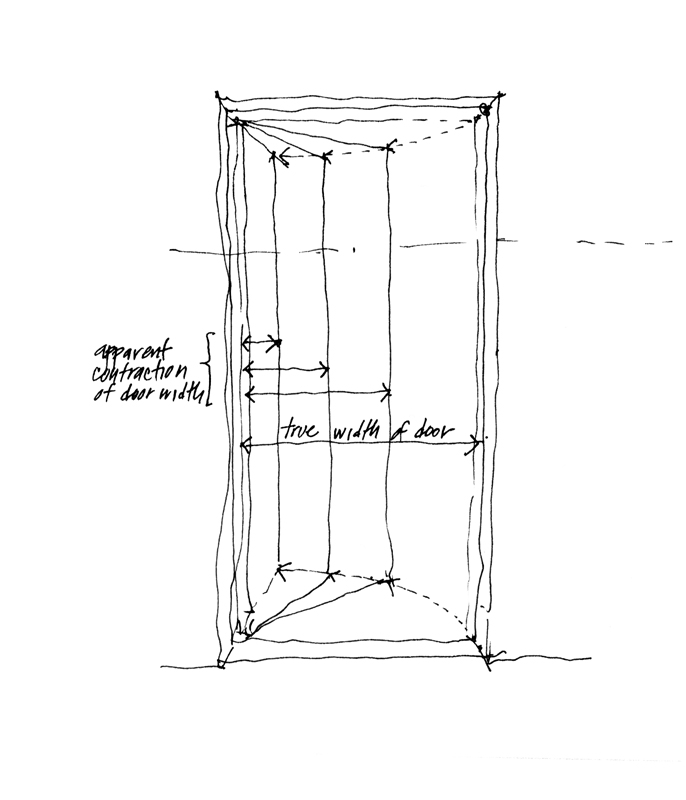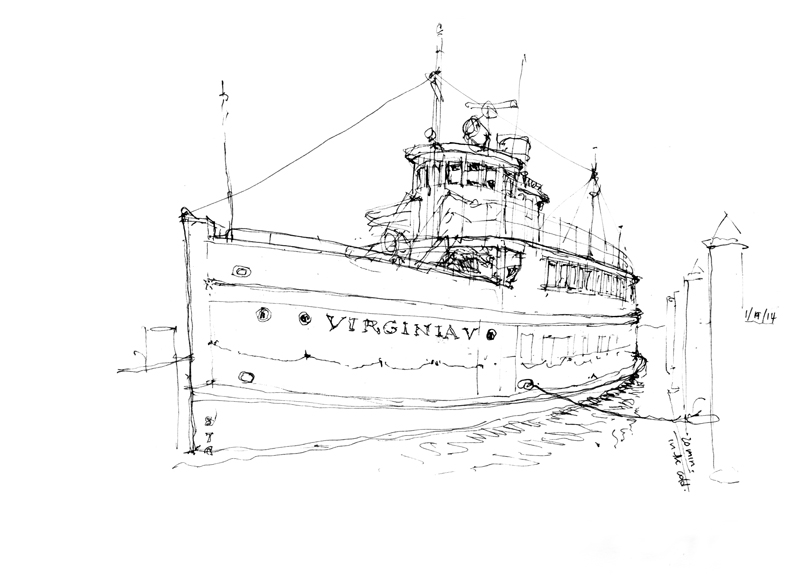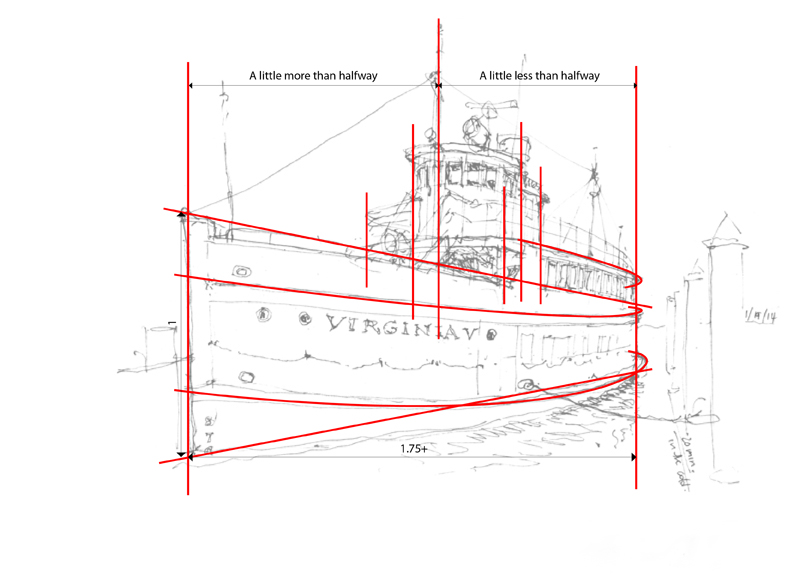Foreshortening is the apparent change in form an object undergoes as it rotates away from our point of view. This phenomenon is usually seen as a contraction in size or length in the direction of depth, the amount of contraction depending on the degree of rotation. The more a line or plane is rotated away from our point of view, the greater its apparent contraction. You can easily see this as a door opens away from you. Gauging and drawing the phenomenon of foreshortening can be a bugaboo for sketchers because our mind can persuade us to draw what we know—the actual size or length of something—rather than how that thing might appear to the eye—its apparent size or length.
To illustrate a case of foreshortening I want to use this view of the Virginia V that I sketched this past Sunday before the Seattle UrbanSketchers group met at the Museum of History and Industry for its January meeting. One of the reasons for gathering at MOHAI is the beautiful exhibit there of Gabi Campanario’s impressive work documenting the life and times of Seattle over the past six years for the Seattle Times.
The Virginia V, built in 1921 by Anderson & Company and launched in 1922, was part of the mosquito fleet that plied the Puget Sound waters largely between the First and Second World Wars. After WWII, the Virginia V changed hands several times as it served as an excursion vessel. It was placed on the National Registry of Historic Sites in 1973. Completely refurbished by the Steamer Virginia V Foundation, the Virginia V is now anchored at the south end of Lake Union and continues to be used for public excursions and private charters.
In this view of the same Virginia V sketch, I’ve overlaid some markers to show the relationships that I gauged and used to control the foreshortening of the ship. The most important step is ensuring that the apparent length—from the prow on the left to where the hull curves away from our view on the right—is correctly foreshortened relative to the height of the prow. Then, I positioned elements, such as the wheelhouse and bridge, relative to the left and right extents. Note how I try to suggest the way the hull is curved from fore to aft. You can use the span of your hand, the shaft of your pen or pencil, or any similar means to gauge these measurements but it is an essential step in the process. Otherwise, your mind will strongly suggest that you should draw what you know rather than how it appears to the eye.



